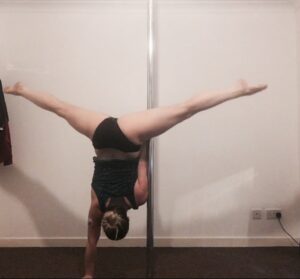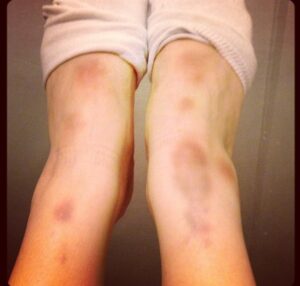Is Pole Dance Easier for Trained Dancers?
 Is pole dance easier for trained dancers is a question that has come up a few times lately, mainly because there is an assumption that pole dance is easier for the experienced dancer who has, overtime, developed skills in flexibility, strength, spacial awareness, technique etc. However, one cannot just click their fingers and expect this to apply these attribute to a new technique such as pole dance. Think of a ballerina learning to dance hip hop for the first time; although both styles share some similarities and are under the dance umbrella, they are completely different genres of dance in terms of their projection, technique and specific skill set. Taking on a new dance style is like learning how to walk again.
Is pole dance easier for trained dancers is a question that has come up a few times lately, mainly because there is an assumption that pole dance is easier for the experienced dancer who has, overtime, developed skills in flexibility, strength, spacial awareness, technique etc. However, one cannot just click their fingers and expect this to apply these attribute to a new technique such as pole dance. Think of a ballerina learning to dance hip hop for the first time; although both styles share some similarities and are under the dance umbrella, they are completely different genres of dance in terms of their projection, technique and specific skill set. Taking on a new dance style is like learning how to walk again.
 Like many others, when I first started pole dance I was shocked at how hard it was. The bruises, the burns and the inability to lift myself to the top of the pole was a rude awakening. Even though I was in full time dance training at the time, pole was definitely not easy for me and it still isn’t. I push through pain barriers just like you do. I have to work very hard to achieve my current standard and I have to keep working in order to maintain and expand it. Each and every trick comes with its own level of difficulty and the amount of time spent trying to master said trick varies massively.
Like many others, when I first started pole dance I was shocked at how hard it was. The bruises, the burns and the inability to lift myself to the top of the pole was a rude awakening. Even though I was in full time dance training at the time, pole was definitely not easy for me and it still isn’t. I push through pain barriers just like you do. I have to work very hard to achieve my current standard and I have to keep working in order to maintain and expand it. Each and every trick comes with its own level of difficulty and the amount of time spent trying to master said trick varies massively.
Saying that, my dance training did have its perks. I found that I was able to pick up movement quite quickly and understood the technique much faster than others who were in my class. My flexibility also helped me carry out certain tricks a lot smoother. That’s not to say they were easy, though. Actually, at times it was quite frustrating because I had this expectation of myself that I should just be able to do it because I’m flexible enough to do the trick but couldn’t because it would hurt too much or I wasn’t strong enough.
It took me while to let go of the perfectionist attitude and to understand that pole dance and contemporary dance utilise a very different set of skills. Pole dance Makes use of upper body strength in a very different way than contemporary dance, just like contemporary demands a strong lower body / core to solidify grounding techniques and connection with the floor. In contemporary dance I have never felt a pain that is similar to that of a remi layback in pole dance. Likewise, in pole dance I have never had to focus so much on the position of my feet or the placement of my hips as an I do when I dance contemporary.
I saw a girl recently who was trained in dance and was stunning to watch on the pole. I could see that her toes were pointed perfectly and her lines were exquisite. I guessed that the flexibility moves may have come a bit easier to her, but that is only because of the years and years’ worth of training she has already completed in order to achieve that flexibility. Remember this if you find yourself in class with a girl like this, understand that you are seeing the result of a journey that started long before she tried that trick you see her preform so effortlessly. Everyone is at a different point on their pole journey timeline, some further on flexibility, some less on strength, some less in performance, some further on the choreography etc. Learn from the people who are ahead of you and give insight to the people who are looking up to you if you are ahead of them.
So, is pole dance easier for the trained dancer? No, pole is not easy for anyone and we could all use a little advice / support.
Rowena x
Be sure to sign up to Pole Purpose newsletter and follow on Twitter, and Instagram and Youtube.




No Comments